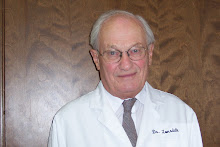Readers of this blog must have noticed repetition of certain features surrounding the role of sugar in the American diet. It is well known that repetition ensures that “something sticks” in a reader’s mind. So here is some more information on this subject. I had been aware of the writings of Dr. John Yudkin for many years and I was able to obtain a copy of the 4th printing by Bantam Books of his book entitled “Sweet and Dangerous” from the local library. This amazing book, nearly forgotten, was published originally by Peter H. Wyden, Inc. The first edition appeared in April 1972 and a second printing in July of 1972. A Rodale Press Book Club edition was also published in 1972 and Bantam Books produced 4 printings. It was published simultaneously in the United States and Canada. It obviously made news at that time and it is indeed sad that his work is so little known in the sick world of today. On the back of the Bantam Book there is a short passage as follows:
”In this controversial headline-making book, Dr. John Yudkin, the renowned physician, biochemist and researcher whose pioneering studies of sugar have been acclaimed throughout the world, offers his never-before-published findings about sugar and explains clearly and concisely why ordinary table sugar is a health hazard for all ages”.
The text of the book would be startling to the uninitiated and would be ridiculed by many readers. How on earth could sugar, the very fuel that drives our cells and enables us to function, be dangerous? It begins with
”Why this book is necessary for your health” and continues by saying:
“[First], my research on coronary disease has convinced me beyond doubt that sugar plays a considerable part in this terrifying modern epidemic”.
His experimental work was performed at Queen Elizabeth College of London. Yudkin, together with the professors of botany and chemistry of the College, organized a symposium:
“that brought home to the three of us the enormous versatility and unique properties of the substance that is such a commonplace in all our lives”.
He goes on to say that:
“these properties tie in all too neatly with the increasing evidence pointing to the involvement of sugar in many diseases, not just the coronary epidemic”.
It is impossible to provide all the data that are supplied in this book but on page 5 Yudkin makes two “key statements that nobody can refute”.
”First,there is no physiological requirement for sugar. Second,“if only a small fraction of what is already known about the effects of sugar were to be revealed in relation to any other material used as a food additive, that material would promptly be banned”.
There is no greater difficulty than giving people advice about food, drinks and so-called recreation drugs. How many people in today’s world do not know the danger of tobacco? In spite of this fully accepted danger, thousands still smoke, knowing full well that they might be committing slow suicide. It is extraordinarily difficult to get people to understand that their recurrent illnesses and many common symptoms are sugar related. We encourage our children from infancy to become “sugarholics” and very few physicians believe it is dangerous or plays any part at all in disease.
I have repeatedly stated that sugar is being used as a “drug” that, like salt for many people, gives a jolt of pleasure that is perceived by the brain as the result of a signal from the tongue. Thus, it should be clear that artificial sweeteners like aspartame(Nutrasweet) have the same effect as sugar. The Nutrasweet Company published a study years ago that refuted medical claims that this sweetener was responsible for migraine headaches. The Nutrasweet was given to the experimental subjects in capsules that they swallowed, thus bypassing the taste mechanism. Perhaps they showed that it was not poisonous in the usual and customary sense of poison, but they missed the point completely. All “God made” food provides permutations and combinations of sweet, sour, bitter, salt, astringent and metal. This is how the brain is programmed, in much the same way that we are adapted to full spectrum white light made up by a mixture of red, orange, yellow, green, blue, indigo and violet. We are designed to consume natural food under the sun. Picking out a solitary signal of “sweet” or “salt”, (or living in partial spectrum, e.g. blue light), without the other signals that make up flavor, deviates the interpretation and processing by the brain, hence the potentially addictive quality of both sweet and salt, a phenomenon that I have witnessed in hundreds of my patients. Sugar is extracted from sugar cane or beet and is processed quite differently without the fiber that would be consumed if the whole plant source is eaten. That is our biological inheritance and the further we stray from it, the greater the risk of causing functional deviation in the way that our brains signal our adaptive responses to the constant changes in our environment. Hans Selye, the great (but controversial) Canadian investigator concluded from his extensive studies in animals on the effects of “stress” that human diseases were “the diseases of adaptation”. His conclusions, published under the title of “The General Adaptation Syndrome” took up an entire issue of the prestigious Journal of Endocrinology as long ago as 1946. I have read it and reread it over the years and believe that it provides clues to disease that are being constantly neglected in this era of “high tech” analysis. Sugar, in its "astronomical" concentration in so many "man-made" foods is a very important cause of "diseases of maladaptation".
Thursday, December 15, 2011
Subscribe to:
Post Comments (Atom)

No comments:
Post a Comment